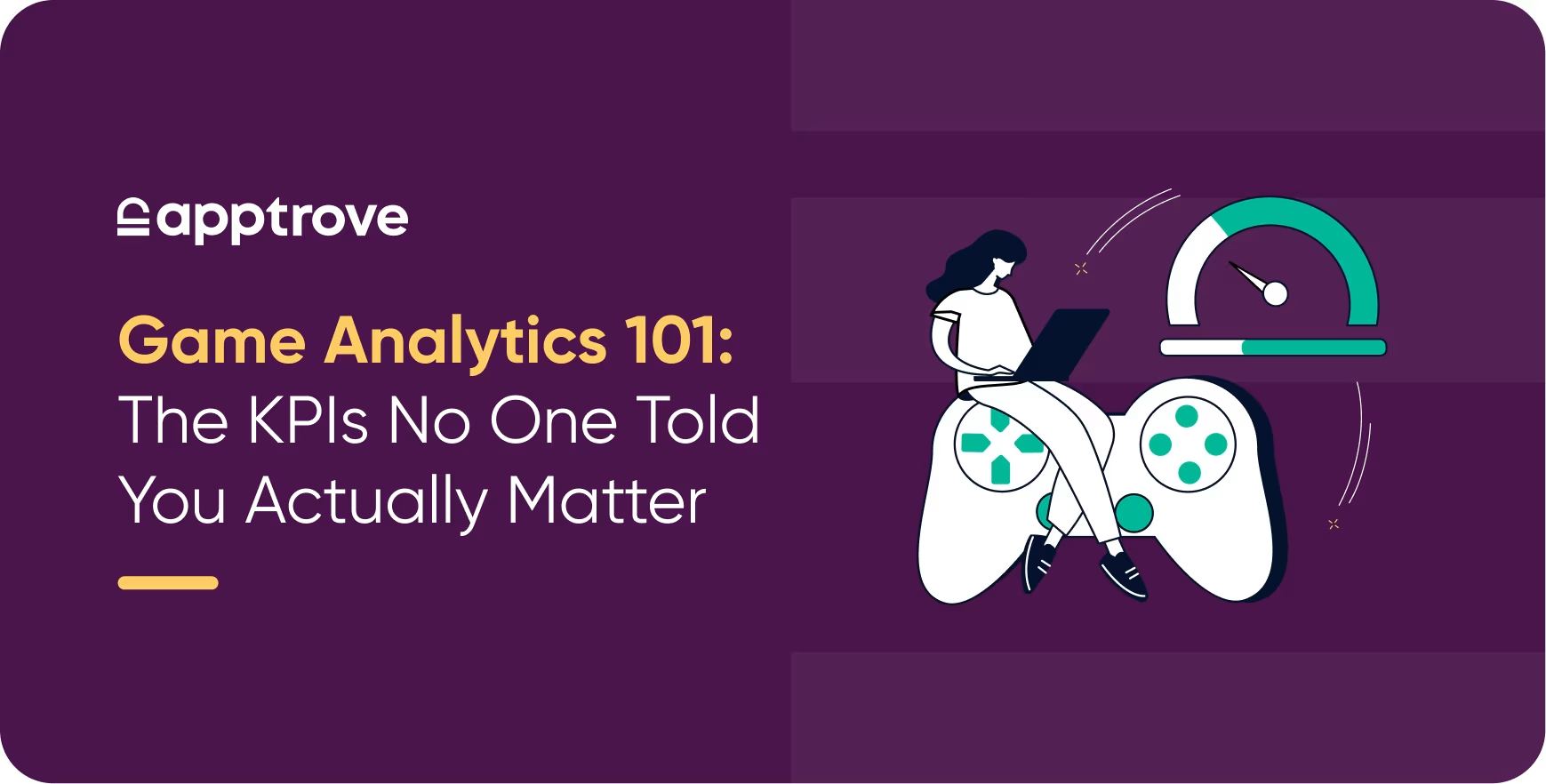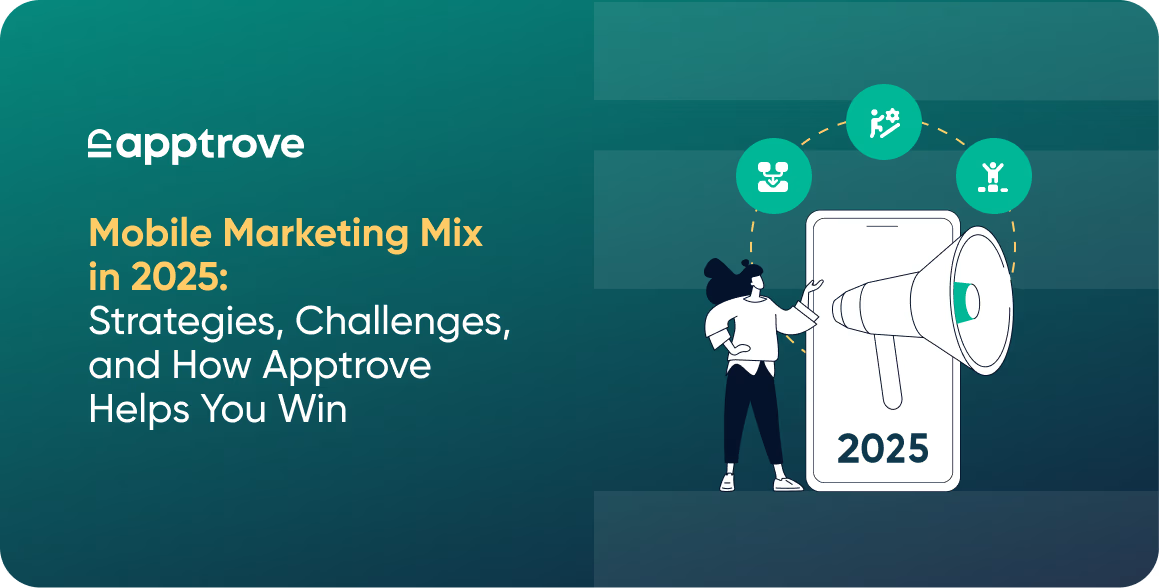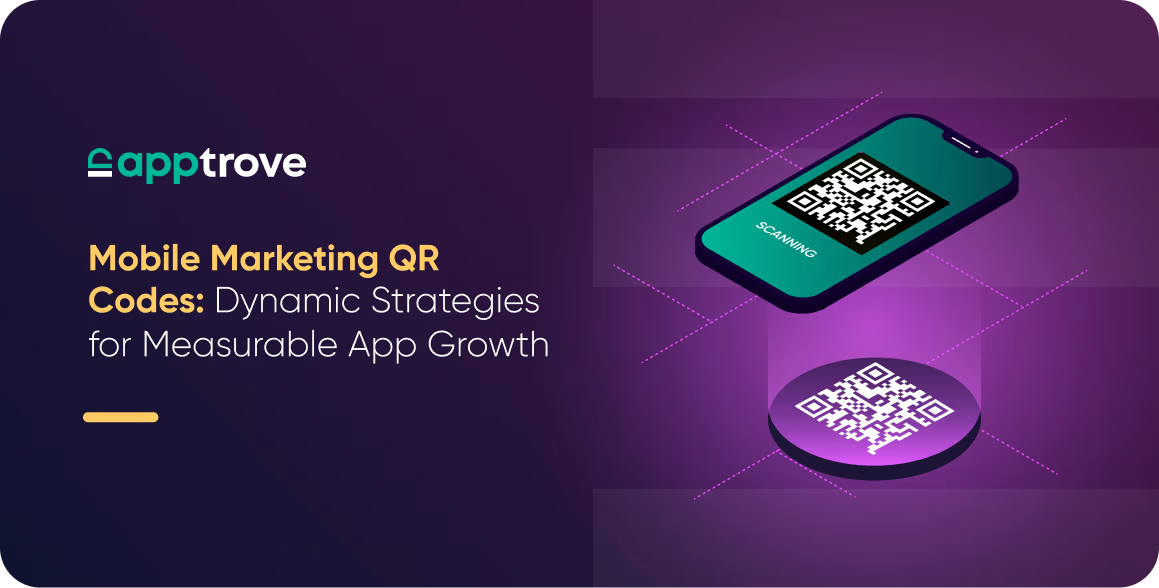With thousands of games being launched every day and user acquisition costs on the rise, it is no longer sufficient to develop a game that simply looks or feels good. From Gen Z subway swipers to millennial night owls, everyone’s playing. The mobile game experience has become so mainstream that its revenue continues to increase by 4% each year, reaching a whopping US$111.4 billion in 2024.
In order to advance your app, you need a better understanding of your players. It is not only about understanding how often they show up, but also why they show up, when they leave, and what gets them to spend their money. This is where game analytics comes into play.
Apptrove gives you a full-circle view of your players and provides you with the kind of insights you only wished you could get beyond superficial stats. From player retention trends to monetization patterns, we connect the dots, so you aren’t just collecting data, but learning from it.
In this blog, we’ll break down how game analytics works, which metrics deserve your attention, and how you can use data to build smarter, more successful games.
What is Game Analytics?
Game analytics is all about turning raw player behavior into clear, actionable insights for game design, monetization, engagement, and overall growth. Instead of relying on your gut instinct or just one piece of feedback, analytics tells you how players are engaging with levels, when they spend money, and when they churn or stop your game.
Analytics track stats such as daily active users, retention rates, in-app purchases, session lengths, and crash points. You will know where players are dropping off, which of the ads are interfering with your game’s experience, when an ad triggers conversion events, and how cohorts behave across geography and platforms.
Now, insights are not just for reflection, they are for actions. The right game analytics solutions will let you run A/B tests, improve your monetization flow, recommend personalized offers and make retention goals like predicting churn ahead of time. If interpreted consistently and accurately, that data can be the basis to improve gameplay and optimize your business.
How Game Analytics Guides Every Stage of the Player Lifecycle
The mobile gaming sector is both fierce and costly. As new user acquisition costs are rising, conversion and retention are plummeting. Game analytics gives you the insights needed to fight back.
Here’s how it helps at every stage of the player lifecycle:
1. Create a Player Experience that Sticks
Every tap, swipe, and quit is data. Understanding where players quit or get stuck on game flow helps you refine the experience of the game. Game analytics allow you to identify friction points early and take action, whether it’s a confusing tutorial, an unbalanced level, or a monetization touchpoint that is frustrating the user. Instead of guessing what is going to work, you can use proven data to support your decisions.
2. Improve Retention With Behavioral Insights
Research has shown that only 25% of users found their way back to the app on Day 1, and less than 5% make it to Day 30. When you have paid good money to acquire users, and they bounce after one session, that’s money down the drain. By segmenting users based on behavior and measuring return rates, you will be able to build a smarter re-engagement campaign, ultimately building a stickier product.
With game analytics, you can analyze churn rate, stickiness, and DAU that can help craft engagement strategies like personalized offers, daily rewards, and push notifications to keep players coming back.
3. Optimize Monetization for Every Player Type
Most mobile games rely on a combination of in-app purchases and ads to make money. Not every player spends, but those who do, spend differently. With the right analytics, you can segment users based on purchasing behavior and personalize pricing, bundles, and special offers in ways that increase revenue without compromising experience.
4. Precision Marketing That Drives Real ROI
User acquisition is becoming more challenging with every privacy change like ATT and SKAdNetwork. Game analytics helps take you beyond installs. With attribution metrics, you can identify which channels bring high-LTV users so you can allocate spend more effectively, prioritize producing more effective creatives, and scale campaigns confidently.
Core Game Analytics KPIs That You Should Be Tracking
If you think you are tracking every number but still struggling to connect the dots, here’s a breakdown of the most important game analytics metrics and why they deserve a permanent spot on your dashboard.
1. Monetization Metrics
Monetization metrics help you understand how effectively your game turns engagement into revenue.
ARPU (Average Revenue Per User)
ARPU gives you a quick view of what revenue is generated on average from each player. It’s a useful indicator for evaluating the earning potential of your game along with the other indicators.

ARPPU (Average Revenue Per Paying User)
In contrast to ARPU, ARPPU only looks at players who spend money. A high ARPPU indicates that your in-app purchases are attractive and valuable.

ARPDAU (Average Revenue Per Daily Active User)
This indicator lets you easily understand how much money you are making from the players who are motivated to engage and participate in your game on a daily basis. It can be particularly useful when examining the impact of promotional offers and in-game events.

LTV (Lifetime Value)
LTV is a predictive measure of the revenue that a player will create throughout their time in your game. If your LTV is less than your customer acquisition cost (CAC), you should look to adjust your monetization approach.

ATV (Average Transaction Value)
ATV is the measure of how much players generally spend during each transaction. Understanding ATV may help the developer in pricing their in-game purchases and refine their pricing strategies to ensure that they are providing a valuable experience to players who choose to spend money in the game. A greater ATV can indicate that players see value in spending money in your game.

2. Engagement & Retention Metrics
These metrics help you understand how sticky your game is and how deeply players are engaging with it.
DAU (Daily Active Users)
DAU tracks the number of unique players who log into your game daily. It is useful for assessing player engagement patterns over shorter timeframes.

MAU (Monthly Active Users)
MAU measures the total number of unique players that played the game over the course of a month. It is useful for assessing player engagement over a longer timeframe and is useful for analyzing player retention over time.

Stickiness
This metric represents how often players return to play the game in a month, providing relevant measurement of engagement.

Retention Rate
Retention rate is a critical metric for understanding how successful a game is at retaining players after a certain period of time. Retention allows developers to assess where players drop off and where improvements to the user experience may be needed.

Churn Rate
The churn rate is the inverse of retention and represents how quickly players leave the game. A game with a high churn rate indicates an urgent need to evaluate retention.

Session Length
It reflects player engagement; long session lengths indicate high engagement with the game, while short session lengths indicate either player dissatisfaction or friction points in gameplay.

3. In-Game Behavior Metrics
In-game analytics help you see how players move through your game and what actions drive their choices, so that you can optimize your gaming app accordingly.
Start, Fail, and Completion Rates
Tracking how often players are starting, failing, or completing levels is useful for improving the balance of difficulty and player’s app experience.
Currency Flow
Understanding how players earn and spend in-game currency ensures a well-balanced in-game economy.
What You Do With Game Analytics Is What Counts
It’s one thing to collect data and another to make it mean something. Raw metrics will not change anything for your bmobile gaming app unless they’re tied to action. Here’s how to take your game analytics from passive reporting to proactive strategy:
Start With Clear Goals
Before diving into dashboards or obsessing over metrics, take a step back and define what success actually looks like for your game. Understand whether your focus is to improve Day 1 retention, increase in-app purchase, or reduce ad fatigue across user sessions, or something else.
Whatever it is, define it clearly because each goal demands a specific lens, and your key performance indicators (KPIs) should be directly aligned with these objectives. When you set intentional targets, your analytics will show you what matters and why.
Segment Your Users
Today’s most successful mobile games win because they deliver personalized experiences, and that starts with segmentation. Break your audience down on the basis of acquisition source (organic vs. paid), behavioral patterns (active, dormant, churned), spending habits (non-spenders, low spenders, whales), and even by geography, platform, or device.
Each of these groups interacts with your game differently, and personalizing their experience based on this data is the key to improving retention, satisfaction, and revenue.
Test, Don’t Guess
The beauty of real-time analytics is that you don’t have to guess. Game analytics give you the power to move quickly and test what works. You might A/B test new features, try different onboarding flows, experiment with ad placements, or tweak your push notification strategy. The more you test, the more you learn, and every insight is a step toward better performance and stronger engagement.
Close the Loop Between Data and Action
One of the most common problems is gathering insights and not acting on them. To really grow your app with game analytics, you need to close the loop. Use cohort data to power retargeting campaigns, let retention metrics inform your content calendar, and set up smart promotions triggered by purchase behavior. Every insight should lead to a decision, and every metric should drive some action.
To Wrap It Up
For a long time, mobile gaming revolved around design, story, and fun, but as the industry evolved and the competition advanced, it made clear that engaging gameplay alone could no longer ensure loyalty. The goal was never just to count players, but to know why they played, why they paid, and why they left. And when you listen closely enough, you stop creating for a generic audience and start targeting someone more real, more specific.
Game analytics gives you this clarity so that the next time a player opens your app, it is not luck that makes them return. It is intention, precision, and insights sewn into every level, every offer, and every touchpoint. Because when you stop thinking of users as data points and start thinking of them as humans with behavioral instincts, your product is no longer another game, but an experience that players return to over and over again.
Frequently Asked Questions
1. What is game analytics in mobile gaming?
Game analytics is the process of collecting, measuring, and analyzing player data to optimize game design, user experience, and monetization strategies. It helps studios make data-driven decisions.
2. What are the key metrics to track in game analytics?
Essential KPIs include Daily Active Users (DAU), Retention Rate, Lifetime Value (LTV), Average Revenue Per User (ARPU), session length, and churn rate. These indicators show how healthy your game is.
3. Why is game analytics important for mobile game developers?
It provides real-time insights into player behavior, helping developers reduce churn, improve engagement, and increase revenue. Without game analytics, growth becomes a guessing game.
4. How does game analytics support user acquisition and marketing?
Game analytics works with attribution data to show which campaigns bring high-value users. This allows marketers to optimize budgets across channels and increase ROI.
5. Is game analytics only for large game studios?
Not at all. Indie developers and mid-size studios use analytics to make smarter design and marketing decisions. Tools like Apptrove are built to support games of all sizes.






